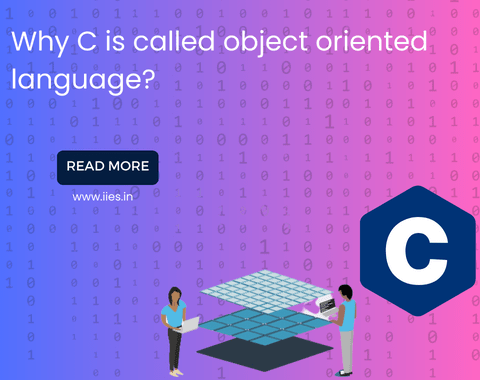
Object-Oriented Programming (OOP) is a programming paradigm that organizes code into objects, which are instances of classes. It focuses on modeling real-world entities as objects, each with its own attributes (data) and behaviors (methods). OOP promotes modularity, reusability, and encapsulation. C is a renowned and influential programming language developed by Dennis Ritchie. It is widely used for system programming, embedded system, and building low-level applications. C is known for its simplicity, efficiency, and portability. Although C is not considered a pure object-oriented language, it does possess certain features and characteristics that align with the principles of OOP. This connection between C and the OOP paradigm has made it often referred to as an object-oriented language.
Programming paradigms are different approaches or models that guide the development of computer programs. They include procedural, imperative, functional, logic, and object-oriented paradigms, among others. Object-Oriented Programming emerged as a significant programming paradigm in the 1960s and 1970s. It was developed as a response to the challenges encountered in procedural programming, such as code organization and reusability. While C played a crucial role in the development of the OOP paradigm, it was not explicitly designed as an OOP language. However, many of the fundamental concepts and design principles of OOP were influenced by the development and usage of C. This includes concepts such as modularity, encapsulation, and reusability.
Objects and Classes:
Encapsulation:
Inheritance:
Polymorphism:
Reusability of code:
Modularity and maintainability:
Improved software design:
C programming language was developed in the early 1970s by Dennis Ritchie at Bell Labs. It gained popularity due to its simplicity, efficiency, and low-level system access.
Structs as user-defined types:
Function pointers and polymorphism:
Encapsulation through function interfaces:
Lack of native class support:
Limited encapsulation compared to modern OOP languages:
Creating a struct as a class equivalent:
Defining methods as functions operating on structs:
Case study 2: Achieving polymorphism with function pointers
Explaining function pointers:
Implementing polymorphic behavior in C:
Creating interfaces to hide implementation details:
Illustrating data hiding through interfaces:
Manual memory management:
Lack of language-level support for inheritance:
Memory management techniques:
Design patterns for mimicking inheritance:
C++ is an extension of the C programming language and is considered a multi-paradigm language. It natively supports object oriented language, among other paradigms.
C++ evolved from C and introduced additional features, including classes, objects, and better support for OOP principles. It retained C’s efficiency and low-level access while enhancing capabilities.
Native class and object support:
Improved encapsulation mechanisms:
Standard Template Library (STL):
C’s OOP principles find application in various industries, including:
Real-world examples of software that utilize C’s OOP-like features include:
While C is not traditionally considered an object oriented language, it has influenced the development of OOP principles and shares certain characteristics with OOP. C’s features, such as structs, function pointers, and encapsulation through function interfaces, allow developers to adopt OOP-like practices. Understanding C’s OOP characteristics is valuable for developers who work with legacy codebases or in industries where C is prevalent. It allows developers to leverage the benefits of OOP principles and apply them effectively in a C-based environment. Exploring both C and modern OOP languages is beneficial for developers, as it expands their skills and understanding of different paradigms. Learning C helps developers comprehend the foundations of OOP, while modern OOP languages provide more advanced and comprehensive OOP features.
Must Read: Implementing OOPS Concepts in C Programming: A Comprehensive Guide
Indian Institute of Embedded Systems – IIES